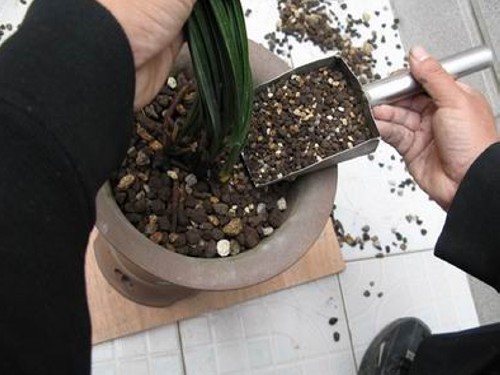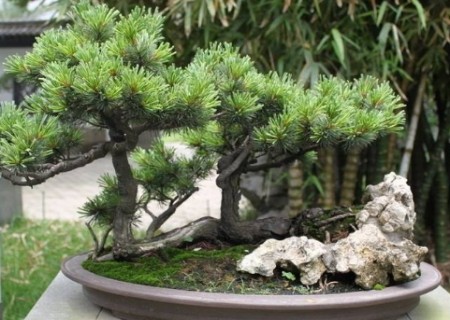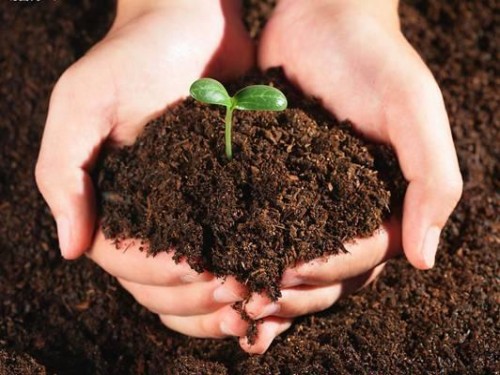The method of turning the bonsai basin
The process of replanting potted plants in pots is called turning over pots. According to the needs of modeling, either change the deep basin into a shallow basin, or change the position or posture of the trees, and carry out the necessary processing to make the bonsai more beautiful and more ornamental. Some potted flowers and trees suffer from diseases and insect pests, which are difficult to cure and get rid of with medicine, and they also need to turn the pot. Bonsai turning is a skill that all bonsai lovers must master, many novice friends may not know how to start and practice, today we will learn to turn the basin.
(1) the purpose of turning the basin
① renewed the basin soil and promoted the growth and development of plants. After bonsai plants grow for a certain number of years, the roots cover the whole basin and form aging root masses, and the potted soil is depleted of nutrients. At this time, it is necessary to renew the basin soil and promote root growth by turning the basin to ensure the nutrient supply of plants. Avoid plant growth weakness and death. In the process of young bonsai plants growing up year by year, when the original pot is too small to affect the growth of the ground, it is necessary to replace the larger pot and add new soil to expand the root nutrition area. In addition, when plant root diseases and insect pests occur, the harm must also be controlled by turning the basin.

② improves the ornamental value of bonsai. When bonsai is used for display and exhibition, the original tile basin must be replaced with purple sand basin, pottery basin and other high-grade pots to improve the common ornamental value. In addition, according to the modeling needs, sometimes it is necessary to change the deep basin into a shallow basin, or change the position or posture of plant planting, and turn the basin at this time.
(2) the number of years of turning the basin
The number of years of turning the basin should be determined according to tree species, tree age, bonsai specifications and growth status.
① tree species: flowers and fruits bonsai, consume a lot of nutrients, it is best to turn the pot once a year, pine and cypress grow slowly, need less fertilizer, can turn the pot once in 3-4 years. In general, broad-leaved trees can turn pots once every two years.
② age: young trees grow fast and should be turned once in 1-2 years, formed adult trees can be turned once in 2-3 years, and old trees can be turned once in 3-5 years.
③ specification: small bonsai potted soil is small and should be turned once in 1-2 years, medium-sized bonsai can be turned once in 2-3 years, and large bonsai potted soil can be turned once in 3-5 years.
④ growth status: generally speaking, when the root system has covered the whole basin, the root protrudes from the drainage hole or grows upward from the edge, it is necessary to turn the basin.
(3) time to turn the basin
It is generally appropriate to turn the basin before sprouting in spring, but the climate in different areas is different, so it should be mastered flexibly according to local conditions. The suitable pot-turning period of different plant species is also different. For example, the plum blossom should be combined with branch pruning and turn the basin at the same time, and the Buddha belly bamboo should turn the basin in May or September. If turning the basin is just a small basin for a big basin, without breaking the earth, it can be carried out all the year round.
(4) the method of turning the basin
I. preparatory work before turning the basin
The first step: for determining the bonsai of the trees that turn the basin, the soil should be dried thoroughly to facilitate the work of turning the basin.
Step 2: each prepare a pair of scissors, a flower shovel, a piece of bamboo, and the necessary watering tools.
Step 3: prepare the cultivation soil, basin, gasket and other materials needed to turn the basin.
Step 4: do a good job in grouping students.
Second, the specific operation exercises before turning the basin
Operation demonstration the whole process of turning the basin
Step one: take off the basin. Generally do not water before turning the basin, make the basin soil slightly dry, first remove part of the soil around the basin, buckle the basin upside down, beat the bottom of the basin by hand, or gently knock the edge of the basin, so that the plant comes out of the basin with the root and soil, for the grafted stump, careful operation should be taken when removing the basin, so as not to separate the scion from the rootstock. When taking off the basin, you can hit the four sides of the basin with the palm of your hand, then hold the stump basin with your hand and push it out from the drainage hole with the fingers of the other hand. If you encounter a basin rolled in the side mouth, the soil around the edge of the basin should be hollowed out. For the stump that is difficult to take off, you can also turn the basin upside down and hang it in the air, and gently tap down along the edge of the basin. As shown in figure 1.
Step 2: go to the old soil and cut the roots. After taking off the basin, use a bamboo stick to remove the upper surface soil and the surrounding edge soil and subsoil, and the amount of soil removal is generally 1 big 3-1 big 2 of the original basin soil. At the same time, the root system should be pruned, such as withered root, rotten root, diseased root, over-dense root, short and long root. After taking off the basin, whether it is changing the larger basin or still using the original basin, part of the old soil should be removed. As for the amount of soil removed, generally speaking, the small basin for the big basin is less, the root system is less, and the original basin for soil is more, but it can not exceed 12% of the original basin. As shown in figure 2.
Figure 2-remove the old soil
Step 3: cut the root. After removing the old soil, the roots can be cut short or thinly according to the development of the root system. For example, black pine, June snow, gold pine and other downward extension of the main root, will produce a circle of roots at the bottom of the basin every year, this circle of roots should be cut off. Yellow poplar, Luohansong and other main roots extend downward more obviously, as long as the surrounding old roots can be cut off. When cutting the root, the root system should also be examined, and the withered root, diseased root, over-dense root and over-long root should be trimmed. Figure 3 shows the general position of the cut line.
When planting, you can choose a suitable new basin, or still use the original basin. The formed stump bonsai should be planted in the original pot and should not be replaced into a large basin in order to control its growth and maintain the original tree shape. Plants can be planted in situ, or they can be adjusted appropriately. If you make root-style bonsai, the bottom soil in the basin should be put more so that the roots are exposed to the mouth of the basin. Other technical requirements for planting are the same as those for potting.
Step 4: put on the basin. After selecting the appropriate basin, first fill the broken basin piece or plastic mesh at the bottom of the basin to facilitate drainage and water permeability. If encounter large basin, deep basin should fill more broken basin piece; miniature basin, shallow basin can be padded with a plastic mesh. Then fill a layer of coarse-grained soil, plant the stump, add new cultivation soil around, gently press the basin soil by hand (figure 4), or fill the soil with wooden sticks, in order to closely combine the new soil with the old soil, do not leave a gap, the basin soil is added to the 2~3cm below the basin mouth, commonly known as "water mouth".
Figure 3-the general position of the cut line when cutting the root
Figure 4-method of filling in the upper basin
Step 5: water. The first time after the basin, the water must be thoroughly watered, and the soil will not be watered after it is dry. Basin soil depressions sometimes occur in the process of watering, which should be filled in time, but do not press or stir the basin soil by hand, otherwise, the basin soil will be hardened after drying. If you encounter a small basin, a shallow basin can be immersed in water. After the water is thoroughly watered, it is best to put the bonsai in the shade for more than ten days, and then put it in the sun after the bonsai growth is restored.
Time: 2019-05-22 Click:
- Prev

Taboos on the display of old pine bonsai
Pine trees are drought-resistant and cold-resistant, and can grow healthily even in harsh environments such as stone crevices. It is a kind of tree species praised in ancient and modern times, and can represent longevity. As the folk saying goes, happiness is like the long running water in the East China Sea, and its longevity is better than that of the immature pine in Nanshan. The ancients often used it as an antiseptic material to preserve corpses. The old pine is also known as the dragon blood tree.
- Next

How to prepare culture soil-preparation method of bonsai culture soil
Soil is the basis of plant growth. In order to cultivate bonsai plants, we must first make a good soil. The growth of plants in the limited basin soil is directly related to whether the basin soil is suitable for plant growth habits. Potted soil can fix plants and supply nutrition, water and air. General potted plant use
Related
- Fuxing push coffee new agricultural production and marketing class: lack of small-scale processing plants
- Jujube rice field leisure farm deep ploughing Yilan for five years to create a space for organic food and play
- Nongyu Farm-A trial of organic papaya for brave women with advanced technology
- Four points for attention in the prevention and control of diseases and insect pests of edible fungi
- How to add nutrient solution to Edible Fungi
- Is there any good way to control edible fungus mites?
- Open Inoculation Technology of Edible Fungi
- Is there any clever way to use fertilizer for edible fungus in winter?
- What agents are used to kill the pathogens of edible fungi in the mushroom shed?
- Rapid drying of Edible Fungi

